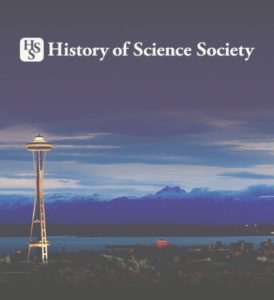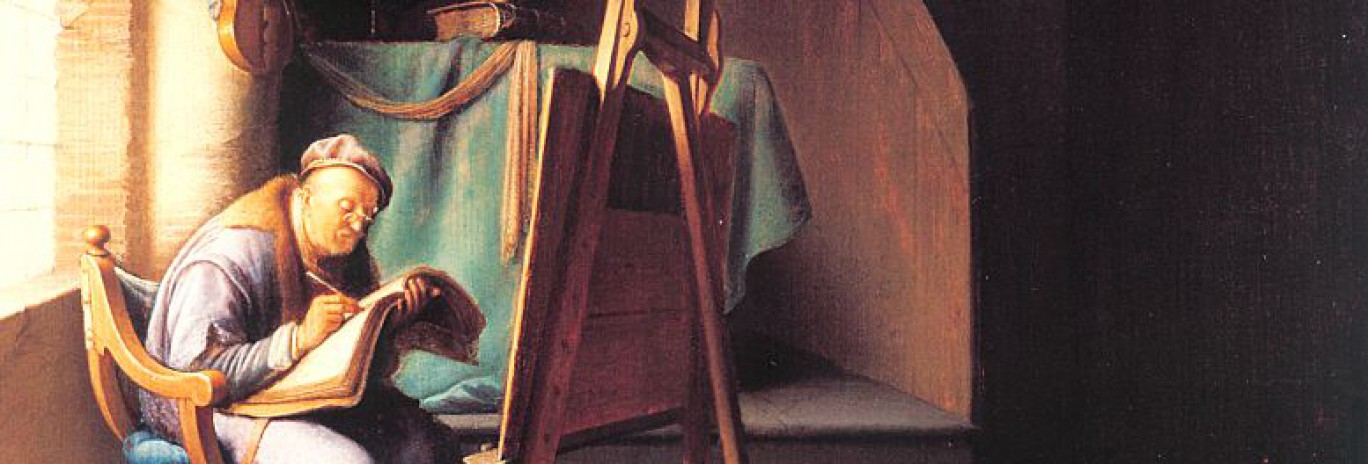Events
Expertise in Art and Science panel session organized by Sven Dupré at History of Science Society meeting, 1-4 November 2018 in Seattle
 Sven Dupré will organize an Expertise in Art and Science panel session during the History of Science Society meeting, which will be held in Seattle from 1-4 November 2018. The session focuses on the development of a science-based conservation practice and the emergence of art history as a ‘science of art’ (or Kunstwissenschaft) in the nineteenth and twentieth centuries. In his paper, Sven Dupré will discuss how X-rays changed the practice of art history. Our PhD student Mariana Pinto will also present a paper in this panel, titled ‘Chemists in the Field of Archaeology: Pigment Analysis of Paint Samples in Nineteenth-Century England’.
Sven Dupré will organize an Expertise in Art and Science panel session during the History of Science Society meeting, which will be held in Seattle from 1-4 November 2018. The session focuses on the development of a science-based conservation practice and the emergence of art history as a ‘science of art’ (or Kunstwissenschaft) in the nineteenth and twentieth centuries. In his paper, Sven Dupré will discuss how X-rays changed the practice of art history. Our PhD student Mariana Pinto will also present a paper in this panel, titled ‘Chemists in the Field of Archaeology: Pigment Analysis of Paint Samples in Nineteenth-Century England’.
The panel session focuses on the scientific methods with which technique in the arts was studied, how they related to larger developments in modern science and technology, and in which institutional contexts expertise in the study of art was claimed. From the nineteenth century conservators turned to chemistry and material science (developing, for example, methods of pigment analysis) to understand the material make-up of art objects. Moreover, the early twentieth century saw the adoption of new imaging techniques (especially X-ray technology) requiring new observational skills from art historians. These developments are connected to the establishment of museum laboratories in the nineteenth and first half of the twentieth centuries, the disciplinary formation of art history, and the professionalization of conservation. Questions of authenticity and the attribution of art works were settled in courtrooms where judges weighed the conflicting opinions of experts. This session investigates these conflicts of expertise between chemists, art historians, artists and art dealers to understand who was considered an expert in the arts, and for which reasons. It has been argued that artistic expertise, or connoisseurship, emerged in the eighteenth century in the context of changes in the art market and museum practice. This session investigates the effects of the emergence of a science-based conservation practice and of art history as a ‘science of art’ for the delineation of expertise and connoisseurship.
Chair: Patrick McCray (University of California, Santa Barbara)
Chemists in the Field of Archaeology: Pigment Analysis of Paint Samples in Nineteenth-Century England
Mariana Pinto (Utrecht University)
During the nineteenth century, chemists were involved in conservation treatments of polychrome artworks. Appropriate methods for the cleaning of easel paintings, for instance, were sometimes done in consultation with chemists. In the field of archaeology, paint samples were extracted from historical objects and wall paintings with the aim to perform chemical analyses of pigments. This paper will show that the methodology and tools used by chemists for such analyses, agree with the standard chemical practices of the period. It also investigates the motivation behind the increasing engagement of chemists in the nineteenth-century field of archaeology. It has been argued that the main interest of chemists involved in the analysis of antiquities was not the preservation of objects, but the characterization of materials. In this paper it will be argued that, to the contrary, nineteenth-century primary sources reporting chemical analysis of pigments, show that chemists were also concerned about the physical integrity of historical and archaeological objects and their preservation. Such concern can be observed particularly in the extraction process of the paint samples used for chemical examination of pigments and binding media. The focus is on the nineteenth-century English context, since during this period the country held a leading position in the field of conservation practice.
How X-Rays Changed the Practice of Art History
Sven Dupré (Utrecht University / University of Amsterdam)
Despite earlier experimentation with X-Ray technology applied to paintings in German science laboratories, it was only in the 1920s and 1930s that the technology became more widely and systematically applied to art. Alan Burrough’s acquisition of the first and extensive archive of X-ray images of paintings, first of the Fogg Art Museum in Cambridge, Massachusetts, was the most important driving force behind this. Burrough’s efforts were inspirational for Kurt Wehlte, the German Maltechniker, who in the 1930s established a laboratory for the X-Ray investigation of paintings in Berlin. In this paper I discuss how and in which ways X-ray investigations of paintings were consequential for art history. To this end, I look at the work of two other researchers: Christian Wolters in Munich and Berlin; and Martin de Wild in Delft and Utrecht. The history of X-ray technology in the history of art in the 1920s and 1930s shows that it was not simply a matter of art versus science, that is, of the eager adoption by scientists embarking on the art historical terrain from their recently established museum laboratories versus the outright rejection of the technology in circles of artists and humanists. X-ray technology was accepted when it supported a particular style of art history which was structured around formal analysis and which radiating from Vienna made school across Germany and the Netherlands. These art historians maintained that new ways of scientifically examining art in the laboratory required students of art history to learn new ways of seeing.


